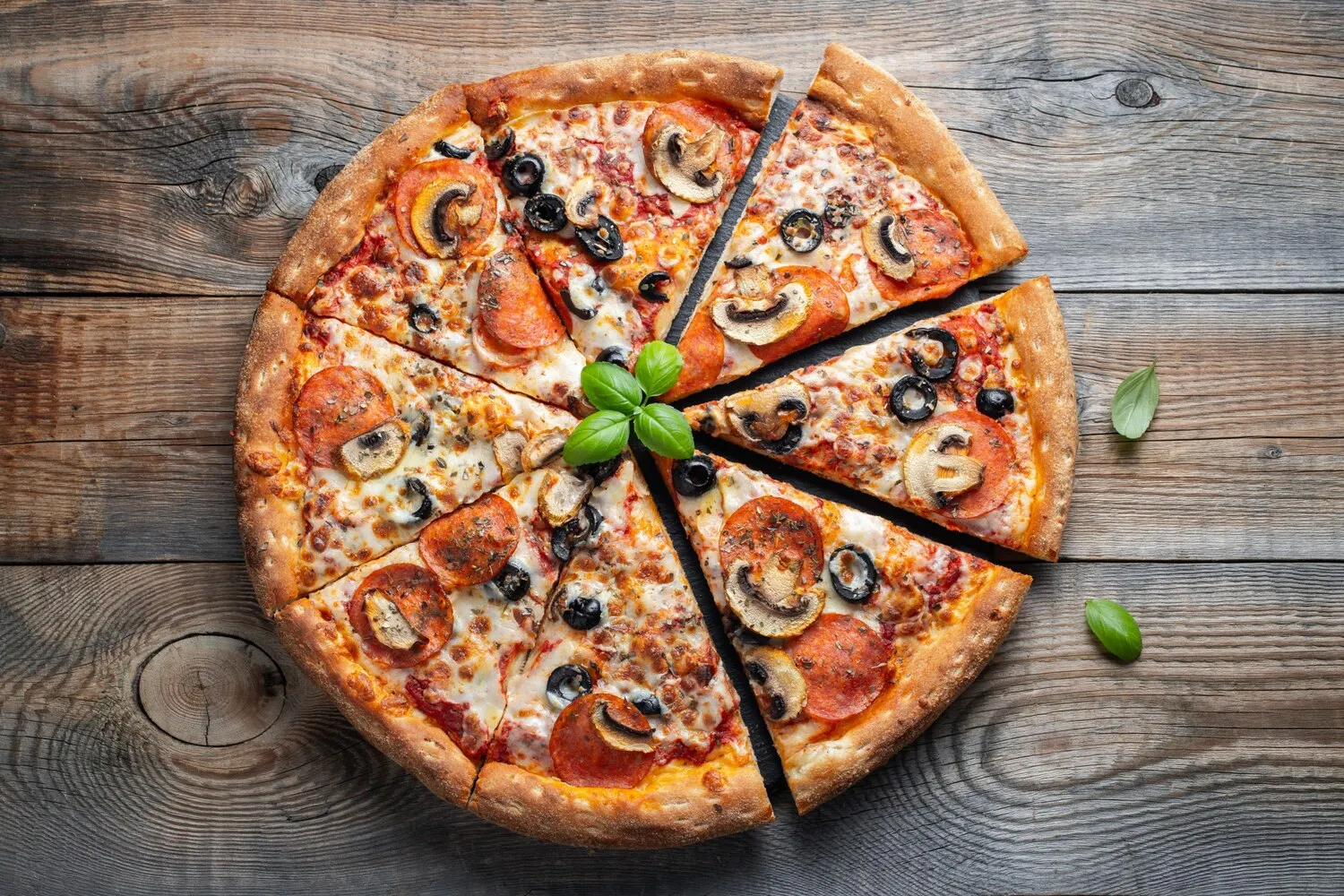
Pizza
Pizza with various toppings.
Pizza's ancestry can be traced back to ancient flatbreads consumed in various forms by civilizations across the Mediterranean. The direct precursor to modern pizza emerged in Naples, Italy, in the 18th or early 19th century, where flatbread was topped with simple ingredients like tomatoes, garlic, and cheese.
Pizza has become a global phenomenon, transcending its Italian origins to become a staple in numerous cultures. It represents convenience, comfort, and shared enjoyment, often associated with social gatherings and celebrations.
Family Meal
Pizza is often enjoyed as a casual family meal, particularly on weekends. Ordering or making pizza at home is a common activity, fostering a sense of togetherness.
Social Gathering
Pizza is a popular choice for parties, sporting events, and other social gatherings. Its ease of sharing and customizable nature makes it ideal for feeding large groups.
Regional Variations
Different regions have developed their own unique styles of pizza, reflecting local ingredients and culinary traditions. Examples include Neapolitan pizza with its thin crust and simple toppings, New York-style pizza with its large, foldable slices, and Chicago deep-dish pizza with its thick, buttery crust and generous toppings.
Convenience Food
Pizza is widely available as a takeaway or delivery option, making it a convenient choice for busy individuals and families.
Pizza offers a wide spectrum of flavors, from simple and savory to complex and spicy, largely determined by the crust, sauce, cheese, and toppings used. Common flavor profiles include tangy tomato, salty cheese, and aromatic herbs.
The primary flavor components of pizza include the slightly sweet and acidic taste of tomato sauce, the creamy and often salty notes of mozzarella cheese (or other cheeses like provolone or parmesan), and the savory taste of the crust, often enhanced with olive oil. Toppings contribute a range of flavors, from the spicy bite of pepperoni and the earthy taste of mushrooms to the sweetness of bell peppers and the salty intensity of olives. Herbs like basil, oregano, and garlic add aromatic complexity.
Crust Perfection
Achieve a crispy yet chewy crust by using high-quality flour, allowing the dough to rise properly, and baking at a high temperature. Consider using a pizza stone or baking steel to distribute heat evenly.
Sauce Simplicity
Use a simple tomato sauce made with good-quality canned tomatoes, olive oil, garlic, and herbs. Avoid overly sweet or processed sauces.
Cheese Choice
Fresh mozzarella is a classic choice for pizza, but other cheeses like provolone, parmesan, and fontina can also be used. Experiment with different combinations to find your favorite flavor.
Topping Harmony
Don't overload the pizza with too many toppings. Choose a selection of flavors that complement each other and distribute them evenly over the surface.
Baking Time
Bake the pizza until the crust is golden brown and the cheese is melted and bubbly. Keep a close eye on it to prevent burning.
Explore additional recipes, insights, and trends within Pizza
Explore PizzaDiscover top dining spots and culinary experiences in Roma.
Explore RomaLearn more about the food culture, restaurant scene, and culinary heritage of Italia.
Explore Italia